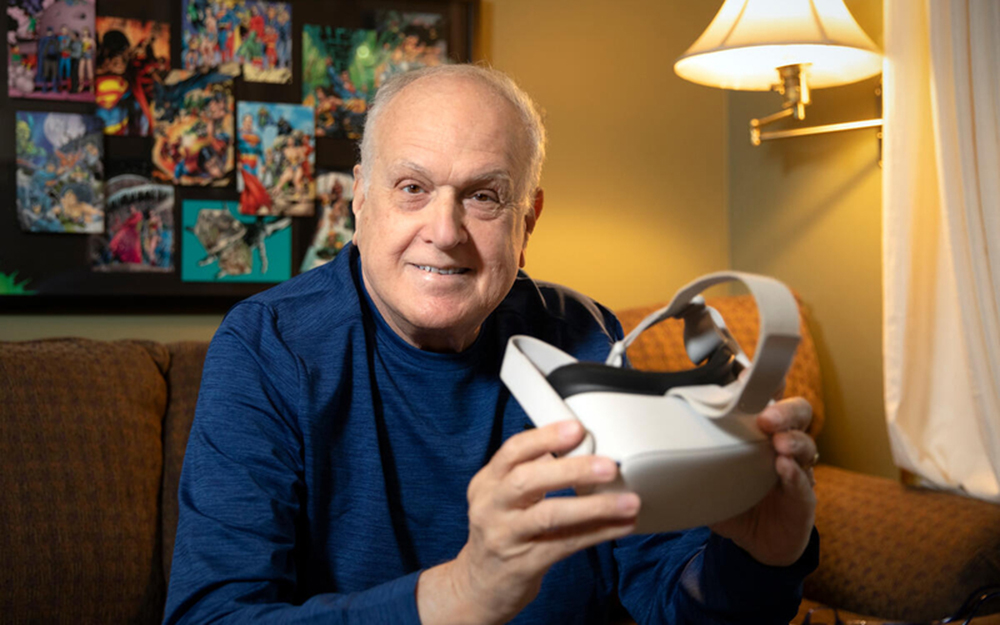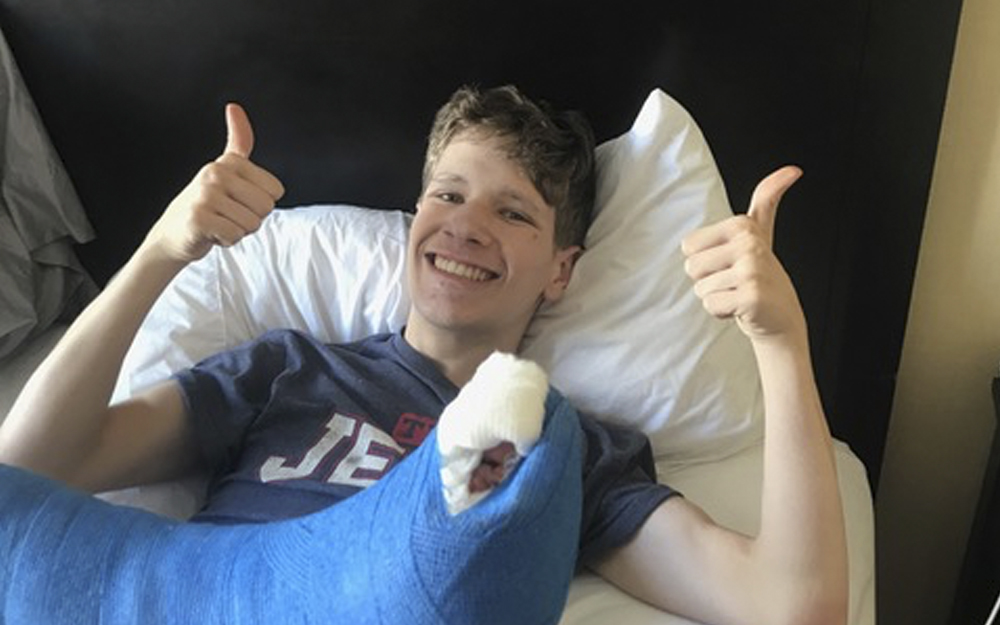A Seat at the Table: Providing the Voice of the Patient
Date
December 14, 2023

Date
December 14, 2023
Credits
Medical providers featured in this article
In Brief
{{cta-block}}
During his 23 years of service in the U.S. Air Force, Tom Norris was the go-to person for unsolvable problems.
Now, he’s helping to solve a problem that affects 51.6 million U.S. adults: chronic pain.
His own chronic pain in his back, leg and neck led to medical retirement from the Air Force. Now, he is a veteran member of the American Chronic Pain Association, facilitates weekly support groups with hundreds of members and has shared authorship on two peer-reviewed publications on pain. He’s also worked with the National Institutes of Health, American Psychological Association and the National Comprehensive Cancer Network.
Tom has served as a patient advisor on clinical trials at Cedars-Sinai for more than a decade.
“I’m one of these people who believe in patient engagement and patient empowerment,” he said. “Society says that patients with pain can’t do anything. I want to prove that wrong.”
Tom was among the authors of a recent Cedars-Sinai study published in the Journal of Pain, which found a combination of interventions improved patient satisfaction while reducing high-dose prescribing. When a doctor was prescribing opioids, a point-of-care reminder would pop up on their computer screen to check that these medications were the most appropriate intervention. Meanwhile, patients were given educational materials about opioids. Tom created a newsletter that was sent out to patient participants in the study, providing updates about the research and the team.
“Tom has been a great asset in providing a patient perspective for our work,” said Brennan Spiegel, MD, MSHS, director of Health Services Research, the George and Dorothy Gourrich Chair in Digital Health Ethics and the study’s lead author. “Our goal was to help patients and doctors make safer decisions when prescribing opioids for chronic pain while also seeking to avoid the stigma that sometimes comes with using pain medications.”
Tom offered perspective on his role in pain research and his experience dealing with chronic pain for nearly four decades.
{{providers}}
Why did you volunteer to work on the Patient Advisory Council for pain studies?
Tom Norris: I run two support groups a week for people with chronic pain.
The attention that these people receive, through this kind of study and interactions with Patient Advisory Councils and researchers, is like putting water on a dried-out plant. They just bloom, and that’s important to me because in my journey, I was ignored.
The Air Force didn’t even know what chronic pain was when my problems first started. I was medically retired as a Lieutenant Colonel with untreatable chronic pain. So now this is part of my fight. Recognizing that people with pain have worth is the big deal for me.
How were you involved with the research?
TN: My role is to bring the voice of the person with pain to the clinical trial. For this particular trial, I was really in on the ground floor. I helped develop the surveys and make sure they were comprehensive and accessible to a wide variety of people.
There were times when the statistician for the study would present results, and I would have a lot of questions, especially about what it means and how it would affect someone who is living with pain.
I saw my role as grounding the lightning rod—we needed to ground everything so the average person with chronic pain would understand it.
"I’m one of these people who believe in patient engagement and patient empowerment. Society says that patients with pain can’t do anything. I want to prove that wrong."
What has been your personal experience with chronic pain?
TN: My pain started in 1988 with chronic back, leg and neck pain. I’ve also had testicular cancer, skin cancer and bladder cancer.
I know from statistics and from personal experience that there are people who only are going to get any kind of relief through medications—and whatever it takes, we have a right to have a life. I’ve tried every pharmaceutical treatment.
Are there any developments in chronic pain treatment that make you hopeful?
TN: I was on fentanyl for 10 years, and those 10 years were lost to me. When I decided to get off fentanyl, against the advice of my pain management doctors at the time, I realized I was stepping into new water.
Today, I don’t take any kind of pills for pain.
During one of my first meetings with Dr. Spiegel, he was looking at a chart on his computer screen with a multitude of therapies people try for chronic pain. In fact, the slide was titled “Have you tried this?” There was yoga, some other things and virtual reality. Dr. Spiegel turned to me and asked if I’d tried VR. I said no, but that I would be willing. They hooked me up with a VR headset. I came home, went through the educational modules, and it helped.
I’ve used virtual reality ever since. It’s become a major resource in my toolbox.
What other advice do you have for people with chronic pain?
TN: Don’t be afraid to ask for help and support. I have 500 people in one of my support groups. In the beginning, we all just want to be rid of the pain and be the way we were before. In all my years, I’ve only seen that happen for one person. It doesn’t happen very often. We have to learn that this is part of our lives, like aging. We learn to adapt to it.
Part of what keeps me going is the support my wife, Marianne, gives me. She is an actor, and during my illness, she has always given me permission to do what I needed to do. She supports all my advocacy work. What is in my toolbox is my faith and Marianne. She’s really amazing. I’m very, very blessed.






